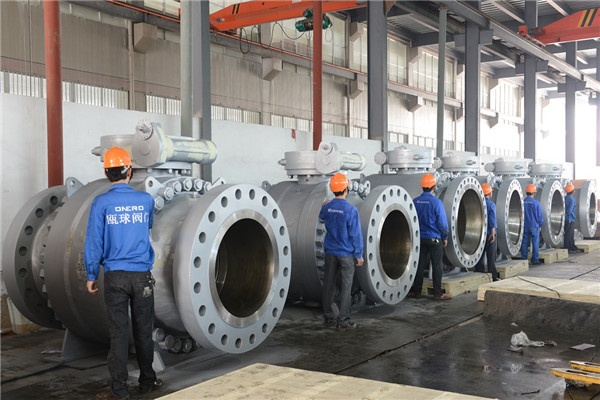A Beginner’s Guide to Different Valve Types
by Muskan Ahuja
Posted on July 16, 2021 at 01:00 PM

What is a Valve and What is the Function of a Valve?
Consider this simple comparison between a shower in your home and a pipeline in a factory if you're unsure what an industrial on/off valve is or does. You turn a tap to allow water to flow to the showerhead to take a shower. Turn the tap the other way to turn off the water. Turn the tap the other way to turn off the water. It works the same way as an on/off valve in a plant or on a pipeline: the operator cranks the handwheel to start the flow of a fluid. He rotates the handwheel in the other direction when he needs to stop the flow.
Valves are made up of several elements that work together to achieve the desired function. The pieces of a valve are frequently constructed of metal or plastic, with the exception of internal seals, which may be made of rubber. The type of liquid or gas being regulated frequently determines the particular ingredients involved.
Since certain fluids can damage metal or plastic, the components of a valve that directs certain materials must be chosen to minimize contact damage. The body is the most important portion of a valve. This is the piece of the system that connects one part to the next and permits fluid to travel through the valve. The outside casing of the valve's construction is also included.
Different Types Of Valves
The parts of a valve aren't the same for every type of valve. Valves come in a variety of shapes and sizes, as well as a variety of valve parts. The following are some examples of common valve types:
Now that you know about all the valves it is important to learn a little bit more about them in detail which would help you make the right choice. Amardeep steel believes in helping you find the best solution possible and thus it is our duty to clarify all the types and their uses for better choice.
These valves, which are commonly paired with quick-acting 90-degree turn handles, use a ball to control flow and allow easy on-off control. Operators consider them to be faster and easier to use than gate valves.
The butterfly valve is a quick-acting rotary motion valve with a compact shape that is suited for tight places due to its wafer-type design. Butterfly valve bodies come in a variety of shapes and sizes.
These valves, which are used to avoid backflow, are normally self-activated, meaning they open automatically when media flows in the intended direction and close immediately if flow reverses.
Gate valves, which are one of the most prevalent valve types, use linear motion to start and stop the flow. These aren't usually utilized for flow control. They were instead employed in the completely open or fully closed configurations.
The knife gate valve, which is commonly used to regulate the flow of solids-containing media, has a thin gate controlled by linear action that can cut through materials and produce a seal.
These valves are good for usage with grease, oils, paper pulp, slurry, wastewater, and other media that would hinder the operation of other valve types. They are not suitable for high-pressure applications.
Globe valves are commonly used in control tasks that need modulation. T-body (as depicted above), Y-Pattern, and Angle body are the three most common body types.
Needle valves derive their name from the point on a conical disc employed within, which is typically used in small diameter piping systems when fine, accurate flow control is required.
Pinch valves use a linear motion to handle solid materials, slurries, and liquids containing suspended solids. Pinch Valves usually have an interior sleeve that isolates the medium.
These valves control flow with tapered or cylindrical plugs and a quick-acting quarter-turn valve handle. When a tight shutdown is required, they provide some of the highest ratings and are dependable in high-pressure or high-temperature conditions.
These spring-automated valves are used to help increase safety by assisting in the restoration of a system to the desired pressure during over-pressure situations.
Conclusion
Knowing the different types of valves can help you choose the one that best meets your needs. Of course, hiring a professional to help you figure out which valves will work best for your pipping is always a good idea. Amardeep Steel's variety of valves and fittings can help you find the best option for your application and usage environment, whether you're constructing a new processing system or looking to upgrade or maintain an existing one. Our experts have assisted industries all over the world as a leading provider of stainless steel alloys, valves, flanges, and more.